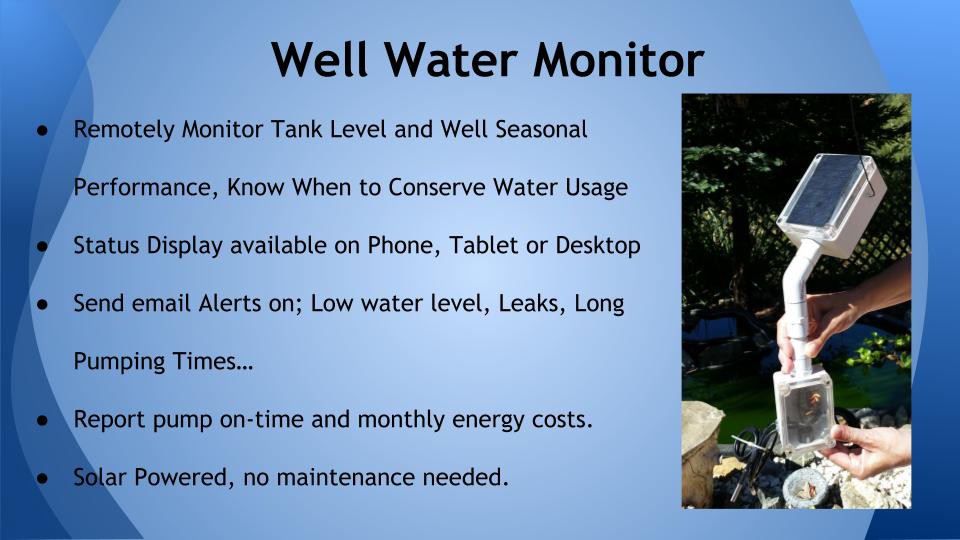




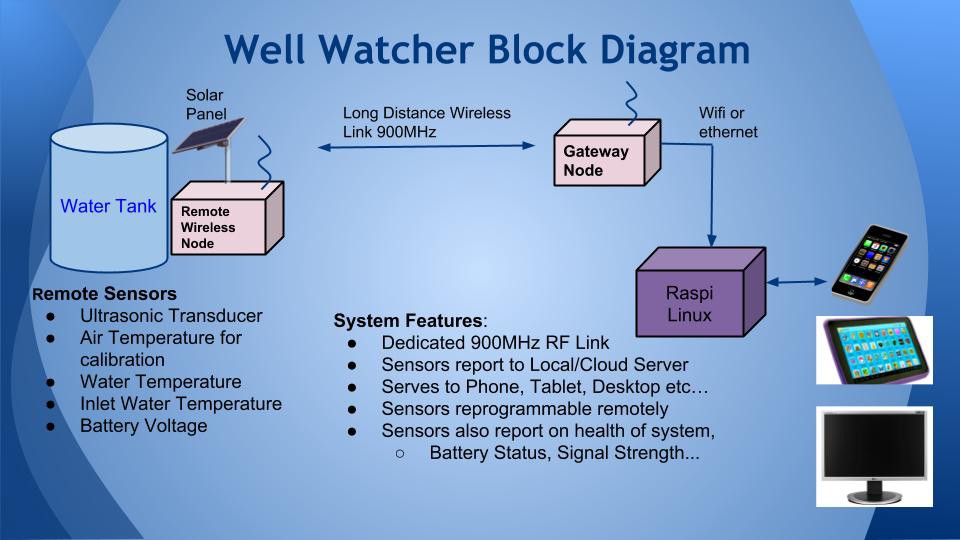
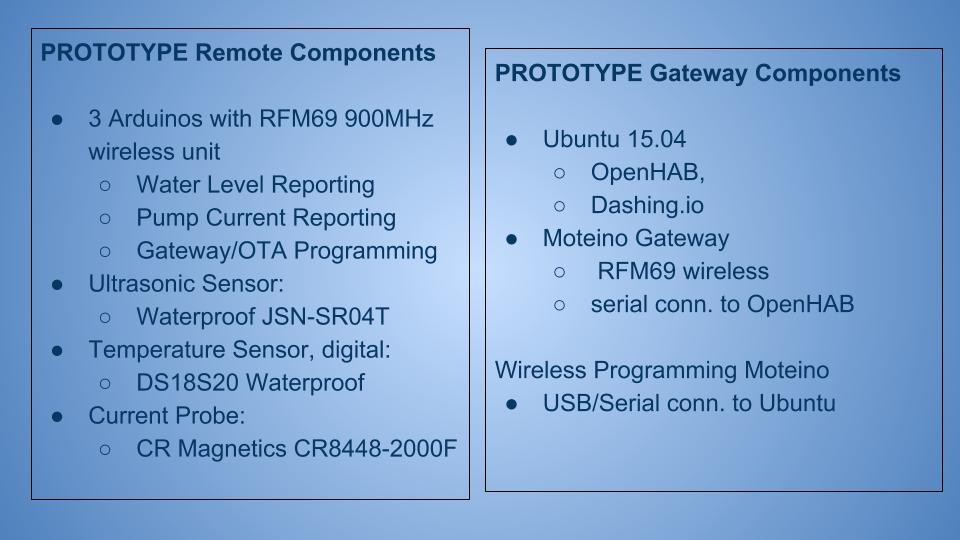
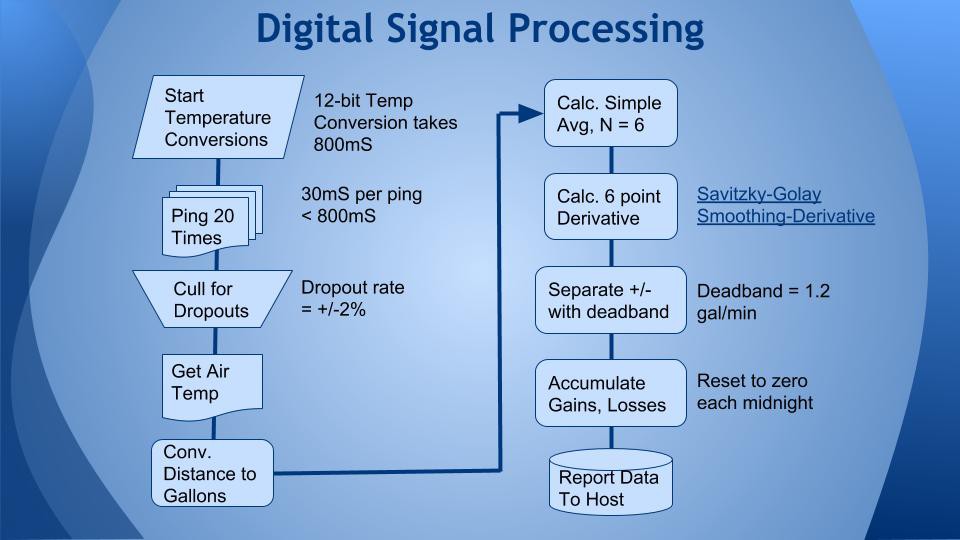

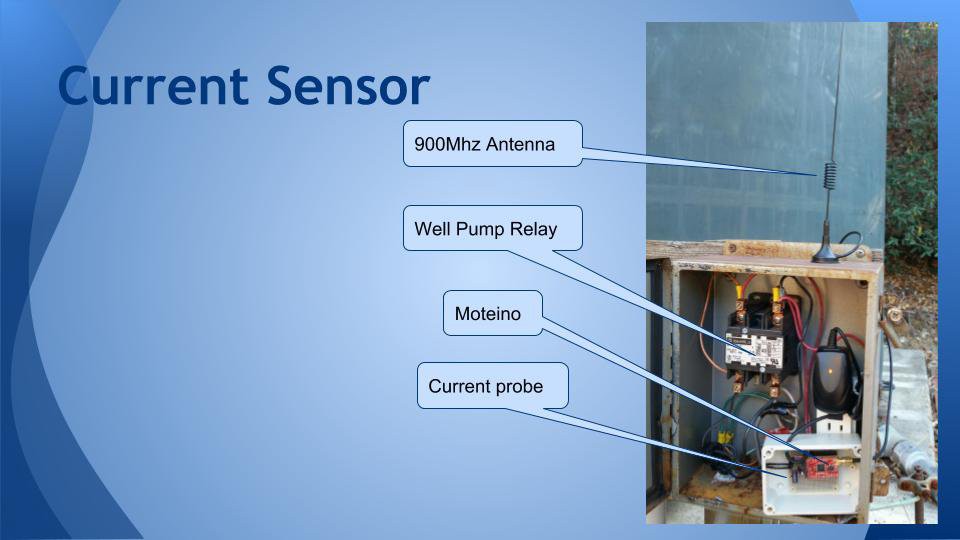

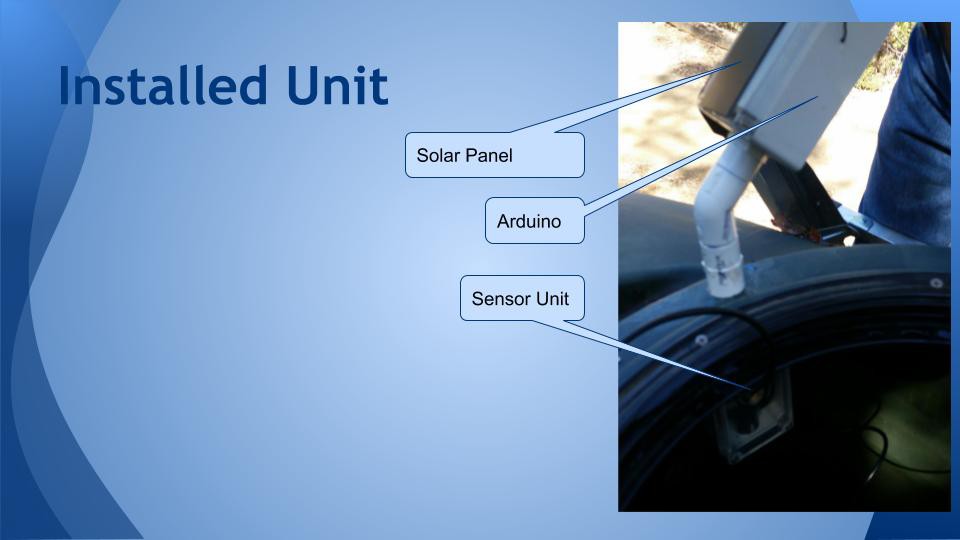
Well Watcher
An Arduino and Raspberry Pi system to monitor the water level in my residential tanks and pump fill times and system water leak detection.
An Arduino and Raspberry Pi system to monitor the water level in my residential tanks and pump fill times and system water leak detection.